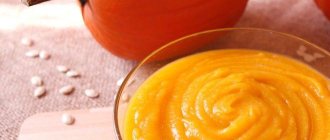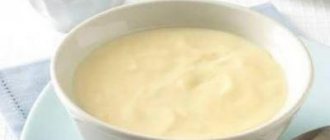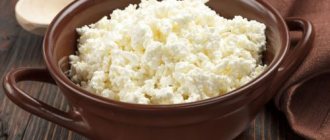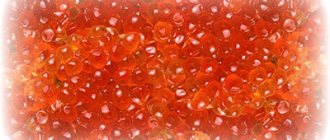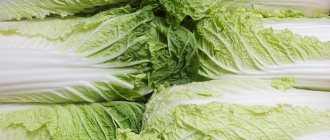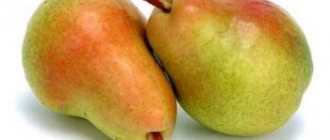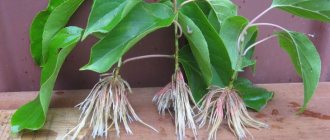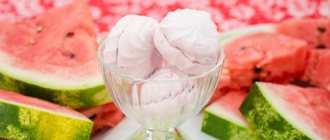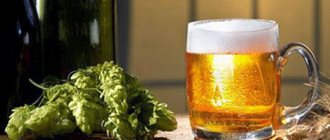Pumpkin casserole
Pumpkin casserole is a healthy and flavorful dish that is easy to prepare. For the dish you will need:
- pumpkin -100 gr;
- millet cereal – 40 g;
- milk or water – 50 g;
- egg;
- sour cream – 50 gr;
- butter – 50 g (we recommend reading: can a nursing mother use butter in food?).
The vegetable is simmered with butter, while millet porridge is prepared in milk. Mix the ingredients and add the egg. The resulting mass is placed on a greased baking sheet. Bake for about 30 minutes. Serve in portions with sour cream.
Casserole is a great breakfast dish
Required for its preparation.
In what form should you eat pumpkin when breastfeeding?
This sunny vegetable is very useful to eat baked, stewed, or boiled. Baked pumpkin retains a huge amount of useful substances, they are easily absorbed by the woman’s body, and then, together with breast milk, enter the baby’s body. To diversify the menu, you can prepare delicious pumpkin puree, sweet milk-based porridge with rice and butter. A variety of casseroles with pumpkin and cereals, apples, and honey will also be useful.
In addition to the pulp, doctors recommend eating pumpkin seeds and their oil. The seeds contain protein, zinc, vitamins and microelements. The oil from this unique vegetable is rich in fatty acids, which have a beneficial effect on strengthening nerve cells, blood vessels, and improve immunity.
Nutritionists say that pumpkin is a low-calorie product. After eating 100 grams of thermally processed vegetables, the body receives only 23 calories. This is due to the fact that 90% of pumpkin is water. That is why many women who have given birth, wanting to get rid of the excess weight gained during pregnancy and regain their previous shape, enrich their diet with a variety of pumpkin dishes.
Preparing healthy pumpkin dishes is very simple and does not take much time.
It is strictly forbidden for a nursing woman to eat fried pumpkin, as well as all other fried foods that can harm the still-immature baby’s stomach and intestines, as well as the pancreas.
At what period is the vegetable introduced into the diet?
The first weeks after childbirth you need to adhere to a strict diet. The diet should not contain brightly colored foods, such as pumpkin. When the child is one month old, you can try eating a small piece of pumpkin, without additional components, to see if the child has a reaction to the product. If the baby does not have allergies and the stool is not affected, you can prepare a dish with this vegetable.
At first, the pumpkin portion should not exceed one teaspoon. Gradually increase the portion to 100 g.
It should be borne in mind that excessive consumption of the product can lead to an increase in bilirubin in women and children. In some cases, the disease may be asymptomatic. In other cases, you may find that certain areas of the skin and whites of the eyes turn yellow. After eliminating the product from the diet, the condition stabilizes. Therefore, you should be careful when introducing the product until the baby is one month old.
After eliminating the product from the diet, the condition stabilizes.
How to properly introduce pumpkin into your diet
It is important to correctly introduce this type of melon into the diet of a nursing mother. But in the first month, don’t even try to taste pumpkin in any form - it’s too early.
- Pumpkin when breastfeeding for the first time should be prepared in the form of porridge.
- A small portion of this dish is eaten by mother in the first half of the day. This will allow you to track the child's reaction.
- If the baby has allergies or digestive disorders, the vegetable is excluded from the diet for 3 weeks.
- With favorable developments, a nursing mother can consume this vegetable 2 times a week, boiled or baked.
How to introduce the product into the diet while breastfeeding
Pumpkin is not a prohibited product during lactation. Taking into account the fact that the mother is not allergic to carotene, the product can be introduced into the menu already on the tenth day after birth. Pumpkin should be used after heat treatment, and not raw. It is best to choose varieties with green or white coloring, as these are the least allergenic species.
When using for the first time, you need to prepare the dish in small quantities (up to 20 g). It is better to use it in the morning or in the middle of the day. In this way, you can track the baby’s reaction to the product. If no negative consequences are observed (no allergies, deterioration of stool, bloating or diarrhea), the portion of the dish is increased. If an allergic reaction occurs, pumpkin is excluded from the diet. After 1-2 months you need to try to introduce it into your menu again.
The baby is allowed to try raw pumpkin 4-5 weeks after birth in an amount of no more than one teaspoon per day. Subsequently, the portion is adjusted to 100 g per day in the absence of a negative reaction in the child. If you have an allergy, the fruit is prohibited for consumption for 1–2 months. Then the product is again included in the menu, starting with small portions. It is important to remember that when breastfeeding, pumpkin dishes should be consumed no more than twice a week. One serving – 100–300 g.
How to eat pumpkin and possible contraindications
The vegetable can be consumed raw if the nursing mother suffers from iron deficiency anemia. All the beneficial properties of pumpkin are preserved when baked. Freshly squeezed pumpkin juice is also allowed. Its effectiveness increases if mixed with carrot and apple juice. This drink will calm the mother and improve the quality of breast milk.
It is also useful for a nursing woman to consume pumpkin seeds; they contain many vitamins and beneficial microelements. This product has a positive effect on the liver and helps reduce bad cholesterol. If a woman has worms, then raw seeds on an empty stomach help to successfully fight the parasites. Such treatment cannot harm the child’s health.
A mother can introduce this vegetable into her diet in the first month after giving birth. First you need to prepare a small portion and eat it in the morning. It is necessary to closely monitor the child. If he does not develop a rash on his skin, he is calm and healthy, which means pumpkin can be present in his mother’s diet up to two times a week.
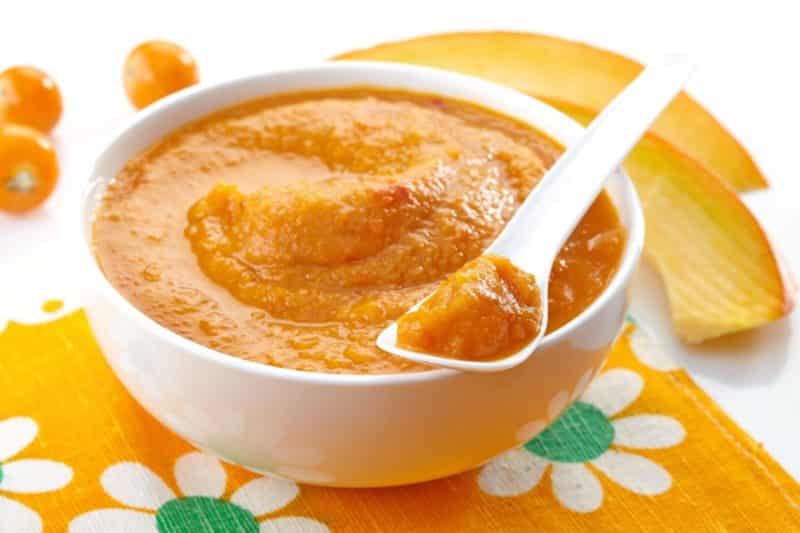
Pumpkin has been known since ancient times; many delicious and healthy dishes can be prepared from it.
Despite all the positive qualities, the vegetable also has some contraindications for consumption. If a child has an allergic reaction to carotene, especially one inherited, then introducing pumpkin into the mother’s diet on her own is not recommended. It is imperative to consult your doctor first to avoid complications.
If a child, after his mother has eaten a pumpkin dish, behaves restlessly, cries, kicks his legs, or has a swollen tummy, then this product should be temporarily excluded from the menu. Through breastfeeding, a large amount of carotene can enter the baby's body, and then the baby's skin may become yellowish. This is not a dangerous phenomenon, but it is also better to temporarily discard the product.
Is it possible for a nursing mother to eat pumpkin in the first month?
Home » Miscellaneous » Is it possible for a nursing mother to eat pumpkin in the first month?
Can a nursing mother eat pumpkin?
The baby is born, and advice is pouring in from all sides on how to eat properly while breastfeeding so as not to harm the baby. Sometimes you get the feeling that when you are breastfeeding, all earthly joys are forbidden to you, and you just need to endure and wait until the child grows up.
- It’s no wonder that with this approach you find it difficult to enjoy your motherhood!
- But today let's talk about pumpkin!
- In this article we will answer a question that interests many: can a nursing mother eat pumpkin?
- The diet of a breastfeeding woman should be balanced and rich in essential elements, so pumpkin will come in handy.
Proper nutrition during breastfeeding: can a nursing mother eat pumpkin?
Your breastfeeding diet should provide energy and nutrients for you and your little one. And many mothers ask the question: is it possible to pumpkin during breastfeeding (breastfeeding)?
Even if you gained a little weight during pregnancy, it will definitely go away over time, but now it is important that your nutrition is complete and that your breast milk is tasty and healthy. That is why pumpkin during breastfeeding is an indispensable product in the diet of a nursing mother.
Most women experience extreme thirst while breastfeeding. Therefore, during this period it is necessary to increase the amount of fluid consumed. In addition to water, which should still be the basis of your drinking diet, pay attention to traditional drinks - pumpkin-apple and carrot-pumpkin juices.
Compound
Pumpkin during breastfeeding is a real storehouse of vitamins and microelements.
- There is more calcium in pumpkin than in other vegetables. For vegetarians, the vegetable successfully replaces dairy products.
- The presence of potassium improves the functioning of the heart muscle of the mother and newborn, and serves as a prevention of vascular diseases.
- The amount of carotene, which is later converted into vitamin A, in pumpkin is the same as in carrots. The substance is responsible for the functioning of the retina, the normal condition of the skin and mucous membranes, and hair.
- Vitamin T, a rather rare element, improves metabolism in the body, preventing the deposition of excess fat. The vitamin also dilutes blood clots.
- The presence of metals - copper, iron, cobalt and zinc - ensures the formation of a sufficient number of red blood cells and synthesizes hemoglobin.
- A large amount of fiber ensures proper functioning of the intestines of mother and baby and prevents constipation.
- Vitamin complex - C, PP, group B - maintains hormonal balance in the body, improves the functioning of almost all organs and systems.
- Orange pumpkin cells contain lycopene, which stimulates fat metabolism, protects the body from eye pathologies, destroys cancer cells, and prolongs a person’s youth.
What are the benefits of pumpkin juice?

Almost all bioactive substances are transferred into fresh juice prepared from raw pumpkin pulp. Drinking this surprisingly bright drink, as if preserving the summer sun, together with ascorbic acid, vitamins E and A, B1, B2, B6, B9, B5 and PP, a person receives a charge of vigor and improves health.
When describing the beneficial properties of pumpkin juice, one cannot fail to mention the rich mineral composition of the product, which contains copper and zinc, iodine and iron, phosphorus, potassium and zinc, manganese and sulfur, calcium, fluorine and many other substances. It’s no wonder that regular consumption of even small amounts of pumpkin juice can have a beneficial effect on immunity and overall well-being.
On this topic:
What to cook from frozen pumpkin during the cold season
Nov 22, 2019
How to cook pickled vegetables quickly and tasty
Nov 17, 2019
BACK FORWARD 1 of 158
The vitamin and mineral complex contained in pumpkin juice has a very diverse effect on the internal organs and systems of humans.
For example, the diuretic, anti-inflammatory, and strengthening effects of the drink have been well studied and used by medicine. What are the benefits of pumpkin juice? Because he is capable of:
- normalize blood clotting;
- stimulate the heart;
- strengthen blood vessels;
- improve blood quality;
- remove toxins and have a positive effect on sugar levels;
- protect against colds and viral diseases during seasonal epidemics.
And these are not all the beneficial properties of pumpkin juice, which has many applications. The main thing is that the drink retains all the qualities of a fresh vegetable.
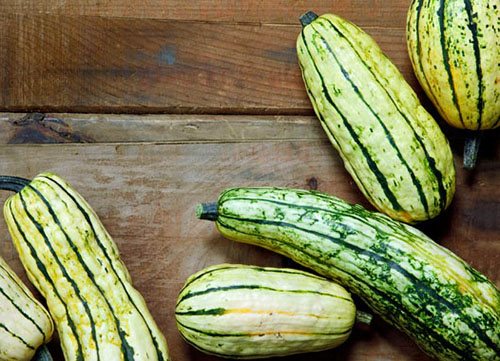
If the juice was stored for the winter and underwent heat treatment, some of the vitamins, for example ascorbic acid, could be destroyed during sterilization, but most of the active substances are retained even in such a product.
Pumpkin while breastfeeding
During breastfeeding, a woman carefully monitors her diet so as not to harm the child’s fragile body. Pumpkin should definitely appear on the menu. Melon crops from Mexico bring considerable benefits to both the nursing mother and the baby:
- iron in fruits becomes an indispensable aid in the fight against postpartum anemia. In combination with microelements such as copper, cobalt and zinc, iron molecules take part in hematopoiesis and help increase hemoglobin levels;
- vitamin PP lowers the concentration of cholesterol in the blood, reduces the risk of inflammatory processes in the body;
- ascorbic acid (vitamin C) helps strengthen immune functions;
- the liquid, which makes up 90% of the pumpkin pulp, has a diuretic effect, helps in the fight against edema and excess weight during the postpartum period;
- Vitamin B1 has a positive effect on brain activity and calms the nervous system. Pumpkin is an effective preventive remedy in the fight against fatigue and insomnia.
Pumpkin improves the activity of the gastrointestinal tract. But this does not always have a positive effect on the well-being of a nursing woman, since it causes a laxative effect. The baby may develop colic and bloating.
Other reasons to avoid eating pumpkin during lactation:
- allergic reaction caused by carotene;
- decreased acidity in the mother;
- duodenal ulcer;
- development of carotenemia (the amount of carotenoids in the blood exceeds the norm). Carotenemia occurs with uncontrolled consumption of pumpkin. One of the main symptoms of the disease is the yellow color of the skin. In this case, it is necessary to temporarily exclude pumpkin dishes from the menu.
Pumpkin and dishes made from it have different effects on the body of mother and child, depending on the method of preparation:
- The orange fruit, when eaten raw, will help increase iron levels in the blood. But when consumed in large quantities, intestinal upset and flatulence occur. Raw pumpkin should be included in a nursing mother’s diet as rarely as possible;
- Stewed dishes improve the functioning of the cardiovascular system and help reduce the amount of blood discharge in the first month after the birth of the baby. Cooking pumpkin with vegetable oil improves the absorption of vitamin A;
- Cooking preserves nutrients. The product prepared in this way is considered hypoallergenic and safe for consumption during lactation. Boiled pumpkin dishes help with constipation and cystitis;
- Steamed product is most beneficial for breastfeeding. The dish turns out juicy, healthy and aromatic;
- Baked and fried pumpkin should not be consumed while breastfeeding, as this can cause colic in the baby.
List of foods prohibited during breastfeeding
Trying to prevent the development of allergies in the baby, as well as problems with the gastrointestinal tract, a woman should completely abandon the following products for the first 3 months:
- sausages (boiled and smoked);
- processed cheeses;
- factory canned food and homemade pickles;
- fast foods and semi-finished products;
- mushrooms;
- White cabbage;
- sauces (mayonnaise, ketchup, etc.);
- chocolate and honey;
- coffee and strong teas;
- alcohol;
- carbonated drinks;
- nuts.
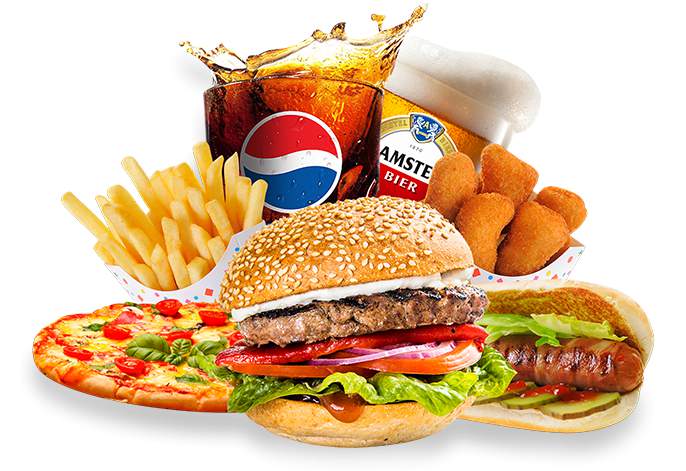
Strictly prohibited
Having endured a strict diet for the first month, mom gradually expands her range. But the products listed above continue to remain prohibited: some for the entire feeding period, others are introduced at later periods.
A small organism cannot cope with the adaptation period on its own. A parent should help adapt to new living conditions
Therefore, it is so important to know what a nursing mother can eat and what will lead to serious problems for the baby. The incentive for a new diet for a woman during breastfeeding will be the opportunity to improve her figure
The lactation period is a chance to get rid of bad eating habits and switch to a healthy diet.
Pumpkin baked in foil from Yulia Vysotskaya: video
These are the simple but tasty dishes you can add to a young mother’s diet.
A nursing woman definitely needs pumpkin in her diet. Vitamins, minerals, fiber - all this is created by nature to support the body of mother and child. The fruit is introduced into the menu already in the first month of the baby’s birth. If you are allergic to yellow culture, you should immediately stop using it. After a couple of months of breastfeeding, you can repeat the allergy test and, if the outcome is favorable, enjoy pumpkin dishes.
Recipes: cooking delicious pumpkin
The benefits of pumpkin for the body during breastfeeding are invaluable. After all, this product helps strengthen the heart, improve digestion, replenish calcium or carotene deficiency, and also:
- Prevention of edema by removing excess fluid from the body.
- It has an anti-inflammatory, diuretic and pathogenic effect on the body.
- Fights fatigue and irritability.
- Controls the processes of hemorrhage and coagulation, which is important in the first days after childbirth.
- Takes care of the beauty of a young mother, making her slimmer and her hair and nails stronger.
From the above it follows that a nursing mother can eat pumpkin, but without overeating. After all, excessive consumption of the product will lead to allergies or colic in the baby.
Here are recipes that will be useful for mommy in organizing proper and healthy nutrition.
Healthy porridge
A popular dish for nursing mothers is pumpkin porridge.
Ingredients:
- Milk - 500 ml;
- Small pumpkin, approximately 400 g;
- Semicircular rice - 1 cup;
- Butter - 30 g;
- Granulated sugar - 3 tbsp. l.
Cooking method:
- You should start with pumpkin. Cut it into two parts, remove seeds and fibers and wash well. Cut the halves into small cubes.
- To prepare porridge, it is better to choose semi-circular steamed rice, which does not stick together or become overcooked. Pour the cereal into a deep bowl and add water. Leave for 2 hours and rinse. This method of preparing rice allows you to remove the starch contained in the grain.
- Place the pumpkin in a saucepan and add milk. It is necessary that all the pieces are covered with milk.
- Add rice to the mixture and mix all ingredients.
- Place the pan on the stove and bring the porridge to a boil. Cook over low heat for half an hour. It is important to stir the dish to avoid burning.
- At the end of cooking, add salt, granulated sugar and butter. Mix.
- To form pumpkin puree, you need to mash the porridge with a fork.
A fragrant and tasty dish is ready!
Pumpkin dessert
Women have such a sweet tooth, and nursing mothers are no exception. During lactation, you want to please yourself and eat sweets, but is it possible to eat dessert without harm to the baby? Certainly! Attention moms, pumpkin dessert.
Ingredients:
- Pumpkin - 300 g;
- Apple - 2 pcs.;
- Honey - 2 tbsp. l.
- Wash the pumpkin, cut into halves and remove seeds. After this, cut into cubes.
- Wash the apples, core them and cut them into pieces.
- Mix the fruits in a baking pot. Pour honey over the top of the dish. If desired, add a pinch of cinnamon for flavor.
- Place the dessert in an oven preheated to 180 degrees and bake for 20 minutes.
These are the simple but tasty dishes you can add to a young mother’s diet.
A nursing woman definitely needs pumpkin in her diet. Vitamins, minerals, fiber - all this is created by nature to support the body of mother and child. The fruit is introduced into the menu already in the first month of the baby’s birth. If you are allergic to yellow culture, you should immediately stop using it. After a couple of months of breastfeeding, you can repeat the allergy test and, if the outcome is favorable, enjoy pumpkin dishes.
Many women turn to specialists asking whether a nursing mother can eat pumpkin.
Like any other vegetable, this orange fruit has many positive properties:
- Contains many vitamins and minerals. They are needed to maintain the balance of essential substances during lactation.
- Source of fiber. Promotes the removal of toxic substances and waste from the body, saturates well.
- The product can be confidently called dietary, despite the fact that the vegetable tastes very sweet.
- Normalizes intestinal function. It has mild laxative properties and helps cope with constipation not only for the mother, but also for the baby.
- Relieves swelling. The accumulation of excess fluid in the mother’s body is a common phenomenon. Pumpkin has diuretic properties during breastfeeding.
- Anti-inflammatory effect. Raw pumpkin or the juice of this vegetable will help reduce high fever no worse than berries such as raspberries.
- Gives a boost of energy.
- Normalizes the functioning of the nervous system. Improves sleep, relieves irritability and nervousness.
- Positively affects the cardiovascular system.
- Strengthens milk production.
We bring to your attention recipes for simple and delicious pumpkin dishes for nursing mothers.
Can a nursing mother have pumpkin porridge, since this dish is often popular? Of course, it is very healthy and tasty if prepared correctly.
Required:
- pumpkin pulp;
- milk;
- millet;
- sugar;
- salt as desired.
Cooking process:
- Cut the pumpkin into small pieces.
- Pour hot milk over vegetable slices.
- Place the pan with the contents on the fire and cook until completely softened.
- Add millet to milk.
- Add sugar and salt.
- Cook for a quarter of an hour, then put in the oven for another 25-30 minutes.
Required:
- pumpkin;
- meat;
- 3 chicken eggs;
- cheese;
- oil;
- greenery;
- salt.
Cooking process:
- Make minced meat.
- Grate the pumpkin.
- Beat the eggs, add to the pumpkin, mix everything.
- Simmer the minced meat, but not until fully cooked, add finely chopped herbs.
- Salt everything.
- Grease the pan with oil and lay out the ingredients in layers, starting with the pumpkin.
- Preheat the oven to 200°, bake for 30 minutes.
- Grate the cheese on a fine grater, sprinkle on top, leave in the oven for another 7-10 minutes.
Cream soup
Required:
- pumpkin;
- potato;
- greenery;
- salt;
- sour cream;
- pumpkin seeds.
Cooking process:
- Peel the vegetables, rinse and chop finely.
- Fill everything with water.
- After boiling, drain the water, mash the potatoes and pumpkin completely.
- The poured broth is added to the puree.
- You can add seeds and herbs if desired.
- Salt everything.
- Top with sour cream before serving.
Pumpkin is a very healthy product for nursing women. However, there are some contraindications that should be observed to avoid problems for mother and child. Is it possible to use pumpkin juice while breastfeeding, starting from the first days of the baby’s life? No you can not. Doctors recommend waiting at least two months after giving birth.
Below are several recipes for preparing delicious and healthy dishes that are approved for consumption during natural feeding.
Boiled pumpkin
Required components:
- pumpkin;
- water;
- salt (to taste).
Actions:
- Divide the washed vegetable in half, remove the core and skin.
- Then cut the pumpkin pulp into several not too small pieces and place in a bowl for cooking.
- Add water until the fruit is completely covered.
- After the liquid boils, add a little salt.
- Cook for about half an hour at medium heat until done, which can be determined by piercing a piece with a fork.
The pumpkin dish can be eaten with sour cream and herbs.
We invite you to read: After childbirth there is no milk: what to do to make it come faster, what should you eat and drink?
Baked pumpkin
Ingredients:
- pumpkin;
- cheese;
- low fat cream;
- vegetable oil, pepper, salt (to taste).
Manufacturing steps:
- We peel the fruit, then cut off the top part and extract the pumpkin seeds.
- Next, add the grated cheese mixture to the prepared vegetable and add cream. Don't completely fill the pumpkin. There should be 3 - 5 cm of unfilled space to the top.
- Next, add oil, salt, pepper, mix the contents.
- We close the workpiece with the cut off upper part, which will serve as a lid, and place it in a hot oven.
- Bake for about 60 minutes. at 180°.
Baked pumpkin with cheese is ready
Vegetable stew
Required Products:
- 0.45 kg pumpkin;
- 2 carrots;
- 0.15 kg rice;
- bulb;
- salt (to taste).
Actions:
- We wash and peel the vegetables.
- Chop the onion into small pieces, grate the carrots.
- Place the resulting mass in a dish for frying.
- Sauté until soft, then add pumpkin cubes and mix the ingredients.
- Cook for about 10 minutes, stirring the mixture.
- Next, add thoroughly rinsed rice, add some salt, and mix.
- Pour in a little boiling water.
- We leave the preparation to simmer in a closed container for a third of an hour.
The dish is ready.
Although zucchini pulp can easily be classified as a healthy product, it is still important to understand that you should not abuse this vegetable.
But if you overeat on orange vegetables, you can get not only indigestion, but also an excess of vitamin A in the body - and this is already dangerous for health.
Since pumpkin is rich in plant fibers, they are poorly digested in the stomach and intestines, and therefore beneficial lactobacilli are forced to multiply more actively in order to process this product. As a result, the favorable microflora of our digestive tract grows, but this can cause not only softening of the stool (which will be useful for constipation), but also provoke the appearance of diarrhea.
It is also better not to eat pumpkin for a nursing woman if she often experiences bloating, intestinal colic and flatulence. When consuming fiber-rich foods, these conditions can be noticeably worsened.
Of course, pumpkin pulp is also contraindicated if you have an upset stomach.
As mentioned above, the abundance of vitamin A in the body does not benefit it - it is believed that an excess of this substance is very dangerous to health, and sometimes even fatal.
We should not forget that pumpkin during breastfeeding can cause digestive problems in the baby, so in the first month after birth, if you decide to add this product to your diet, you need to pay close attention to the baby’s well-being.
Also, due to the abundance of orange coloring pigment, in the first weeks of a newborn’s life, pumpkin dishes eaten by a nursing mother can cause an allergic reaction.
There are various pumpkin recipes for breastfeeding. Delicious and healthy dishes are prepared from this vegetable.
1. Boiled pumpkin
To prepare a boiled vegetable, you should not purchase a peeled and already chopped product. You can get a lot of problems associated with microbial contamination. The fruit should not be too large in size. To make pumpkin not only look appetizing, but also taste good, you need to cook it correctly.
Photo gallery: healthy dishes with pumpkin
pumpkin can be combined in one dish with vegetables, meat, legumes pumpkin puree can be added to bread dough, then the baked goods will take on an unusual orange color by replacing wheat flour with whole grain, you can make muffins with pumpkin for a healthy diet pumpkin can be used as a side dish for meat dishes pumpkin is excellent combined with cottage cheese small pumpkins can be used instead of pots for preparing julienne, stew or roast candied pumpkin are sweet and can replace candy in the diet of a nursing mother pumpkin puree is made from baked vegetables, it can be salted or sweetened from pumpkin you can make a dietary version of cheesecake
